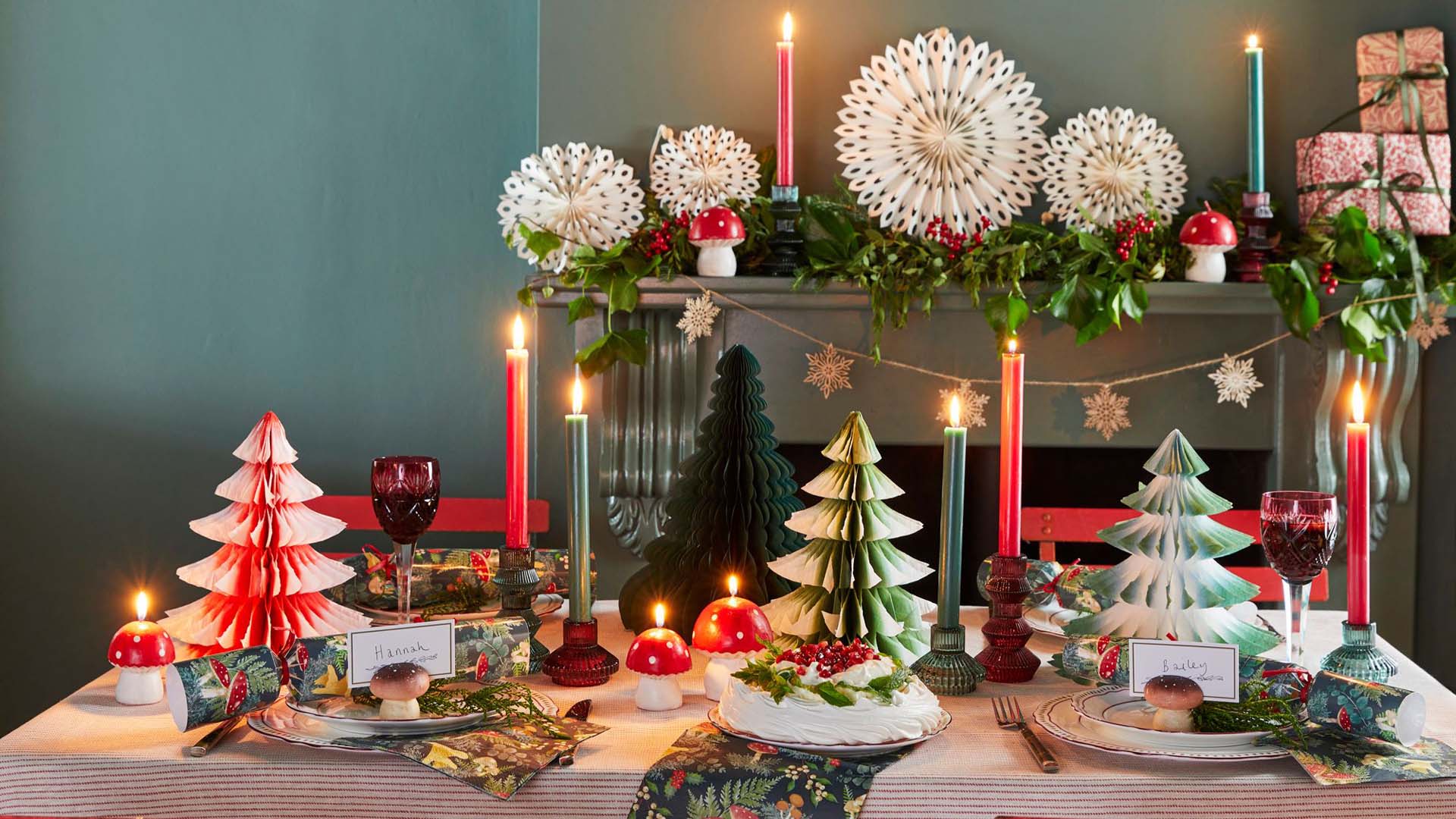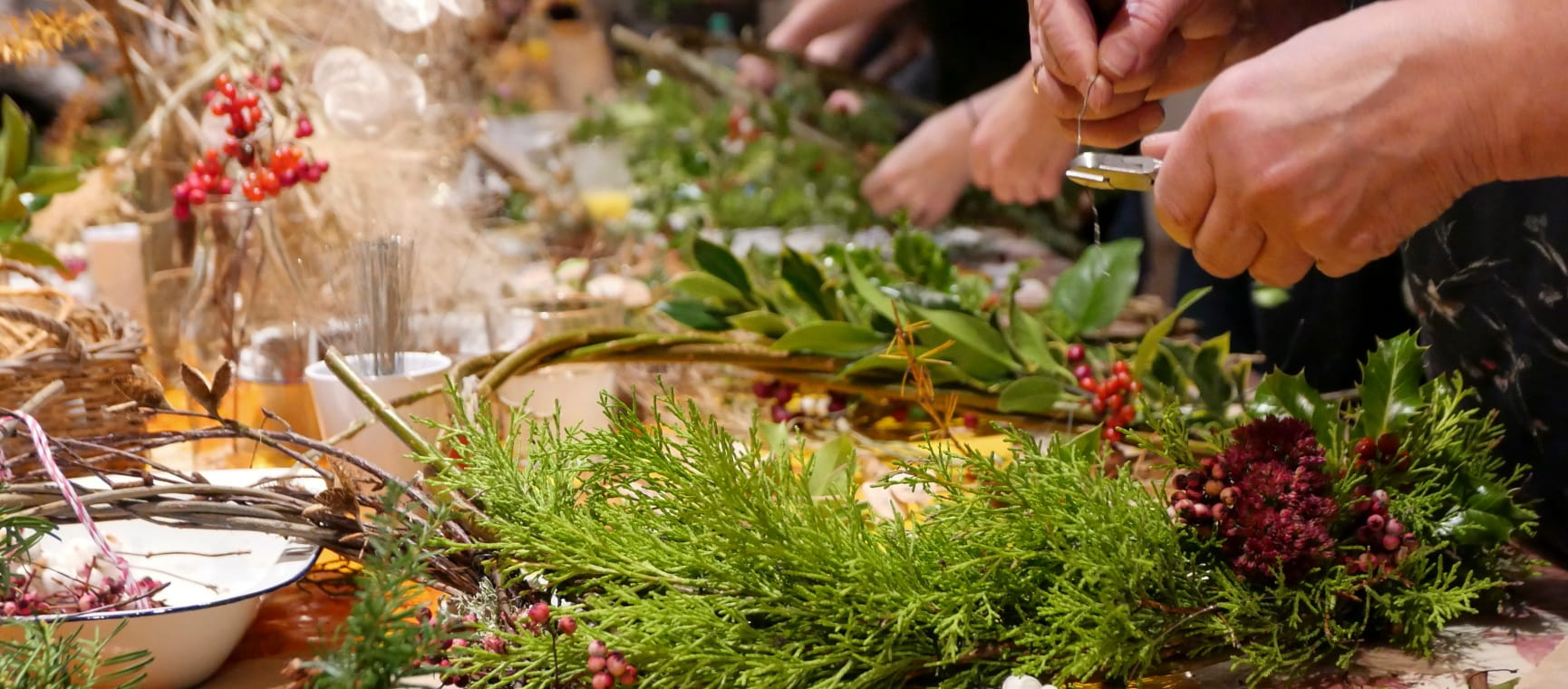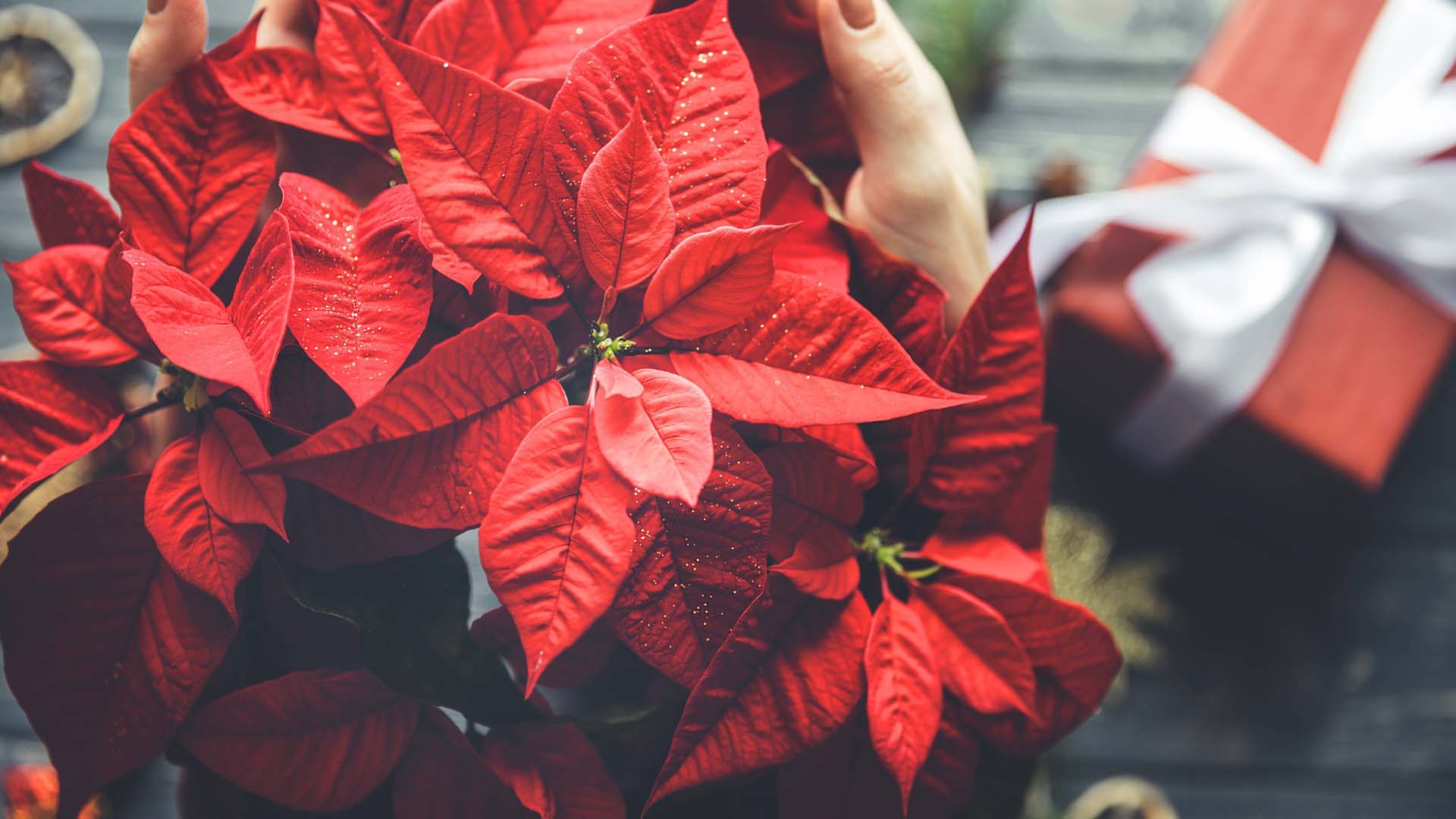
Holly and ivy are as much a symbol of Christmas as Santa, robins and tinsel.
But did you know they were also used in ancient times as decorations for Roman and Pagan midwinter celebrations?
So to celebrate this festive foliage, we've unearthed 20 fascinating facts about holly and ivy.
We’ve also spoken to the National Trust about where to see them, and they’ve given us some top tips for decorating our homes with gorgeous greenery this Christmas.
The two plants come together in the Christmas carol ‘The Holly and the Ivy’, reflecting their use as decorations since Pagan times, when holly was thought to be male and ivy female.
Holly is dioecious, which means that there are male and female plants. Only female hollies bear berries, so if you’re growing holly you need at least one male plant, which will pollinate several females, nearby.
To ‘sex’ a holly, look at its flowers: the males’ flowers have more prominent stamens.
Shop with care, though, some names can be deceptive: ‘Golden King’ is the female holly plant and ‘Golden Queen’ the male.
Ivy, or Hedera helix, is one of the UK’s few native evergreens, with two subspecies: one that climbs, and one that spreads along the ground.
‘Helix’ means winding or spiral, which is a little misleading as ivy doesn’t wind itself around other plants’ stems.
Holly or Ilex aquifolium is one of the UK’s few native evergreen trees.
Ilex means holm oak, a tree whose leaves are vaguely similar to holly’s, and aquifolium means pointed leaf.
Contrary to popular belief, holly isn’t a parasite; it has its own root system and doesn’t take nutrients or water from the plant or tree it grows on.
Before the advent of the Victorian Christmas pine tree, holly branches had been used as decoration since Roman times, when they were brought into the home to celebrate Saturnalia, the midwinter celebration of feasting and gift-giving.
Ivy can sometimes kill the trees it covers, when its stems harden and become woody, as this can restrict the growth of the tree it covers.
That’s for protection, because herbivores such as deer and cattle graze on leaves at lower levels.
Ivy plants can reach up to 30m in height and live for up to 500 years.
In country lore, a heavy crop of holly berries is believed to signify a hard winter to come.
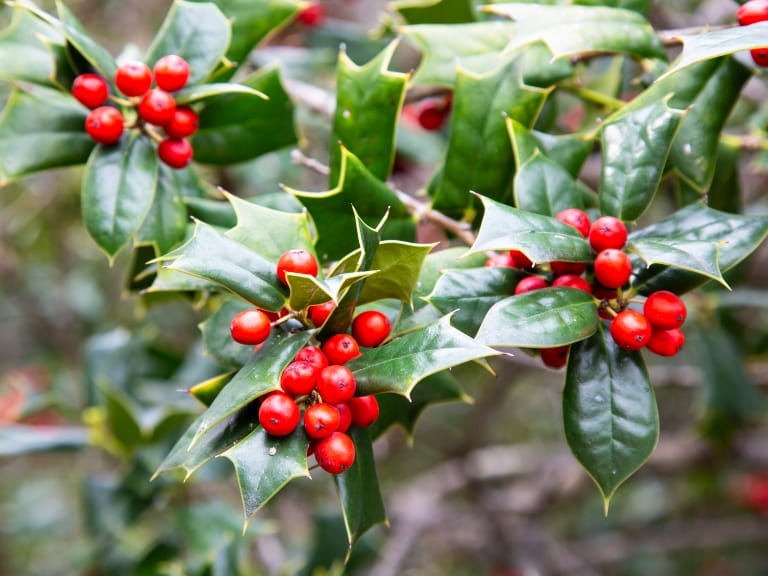
All parts of the ivy plant are poisonous to humans, and its sap can cause skin irritation.
It was believed to be unlucky to cut down a holly tree, most likely due to its association with eternal life, because it flourishes through the cold days of winter when other plants die.
Wearing a wreath of ivy leaves on your head was believed to prevent you from getting drunk; Bacchus, the Roman god of wine and agriculture, was often depicted wearing a wreath of ivy and vine leaves.
Romans also used a bunch of ivy to mark a place where wine was sold.
The wood of the holly tree is white, hard and heavy, and often used for making walking sticks.
As a symbol of intellectual standing in ancient Rome, ivy was used to crown the winners of poetry competitions.
In Celtic mythology, the ‘holly king’ was said to rule the period from summer to the winter solstice, when the ‘oak king’ took over.
In certain circumstances, ivy can help preserve historic buildings by regulating the temperature of their stonework, according to an English Heritage survey.
The belief that holly trees are protective against evil forces stems from the idea that malevolent spirits such as witches or the devil, would get caught up in the dense branches and snagged on the prickly leaves.
Both holly and ivy’s nectar, pollen and berries are important food sources for insects and birds in autumn and winter when other supplies are scarce.
The name Ivy was 7th on the 2023 list of the UK's most popular names given to baby girls, while Holly is one of the most popular girl's names in December.
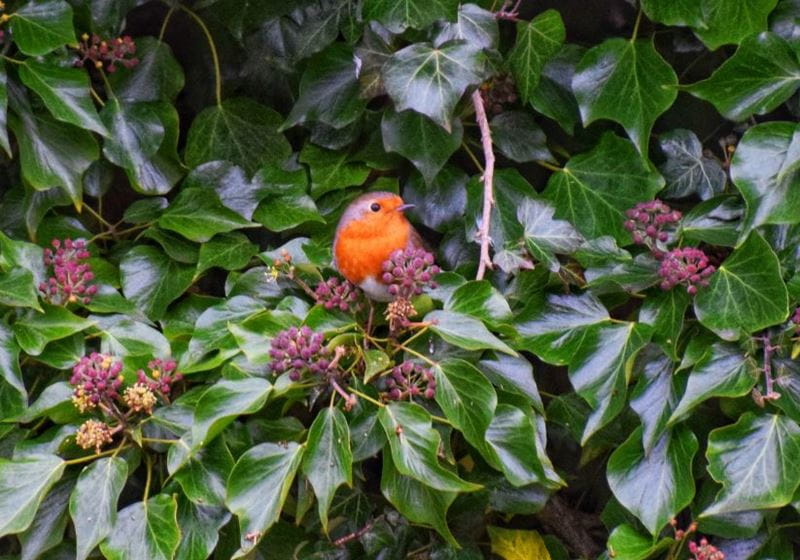
With the festivities ramping up in December, the chill quiet of a winter garden may be a welcome escape this social season – so why not go foraging for festive foliage in your garden?
The National Trust’s Moseley Old Hall is adorned with traditional decorations this Christmas, including swathes of greenery that bring the Elizabethan hall to life at this time of year.
“Holly was thought to protect homes from evil spirits. Witches and warlocks were deterred from entering the home by the prickly leaves,” says Fiona White, Property Operations Manager at Moseley Old Hall.
“An equal balance of spiky and smooth holly leaves would be used to ensure balance in the house.
“Decorating with ivy would ensure the birth of healthy children and keep away the plague. However, it couldn’t be used on its own as this would then be considered a bad omen.”

We've got more tips on bringing the outdoors in and creating Christmas decorations from your garden.

There’s more to holly than prickly leaves and red berries – in fact, there are over 480 varieties of holly which come in different shapes and sizes.
The National Trust’s Hare Hill in Cheshire is home to more than 25 varieties, with new hollies always being added. Emma Hill, Head Gardener at Hare Hill, says:
“I love hollies for their wildlife value and the structure they bring to the garden.
“When people think of holly, they’ll typically think of the classic dark green leaves and red berries. But there is so much variation: different coloured berries, different leaf shapes and sizes and different plant sizes.”
Among Emma’s favourites are Ilex x altaclerensis ‘Camelliifolia’ (Highclere holly) which has a smooth leaf and beautiful shape, and Ilex aquifolium ‘Ferox’ (hedgehog holly) with its interesting layers of spines and slow growing habit (making it a good choice for small gardens).
When buying holly for your garden, Emma says: “Bear in mind that there are male and female plants. Both male and female plants will flower (in early summer), but if you want berries, make sure to buy a female plant.
“Winter is an especially good time to admire hollies and you can create brilliant effects: for example, using holly as a backdrop to a bright-stemmed dogwood, paired with winter bulbs. They can also make an excellent screen or hedge.”
The garden at Hare Hill is closed for the winter season. You can admire the holly collection from February half-term onwards

If you’re feeling a little prickly about holly, the National Trust’s Erddig Hall near Wrexham is home to the national collection of ivy, with over 100 cultivars – an impressive collection which is vital for the preservation of these diverse ivy species.
Head Gardener Andrew Williams says: “Much like how we protect endangered animal species, the conservation of ivy is essential for maintaining its presence in our natural world. The National Trust treats its gardens as living collections, safeguarding the genetic diversity of these plants.
“Ivy is not only important for its beauty but also for its ecological value, as it provides essential nectar and fruit when few other sources are available. This makes it a vital food source for a variety of invertebrates, birds, and mammals, supporting biodiversity and offering shelter for wildlife to overwinter or nest.”
Visitors can enjoy Erddig’s ivy collection throughout the year.

Jamborees, games, rum shops throwing open their doors: our columnist compares Christmas in the West Indies and the UK.



Are Christmas cards going out of fashion? Not according to our survey.
